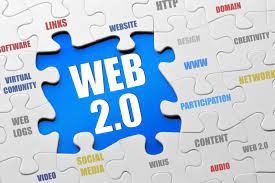Using the Internet is important for business, and one of the most important technologies is Web 2.0. Web 2.0 is a platform that allows for social interaction, content sharing, and collaboration. With this platform, businesses can build new customer relationships, increase sales, and create new revenue streams.
Community-based input, interaction, content-sharing and collaboration
Using Web 2.0 tools to promote community-based input, interaction, content-sharing and collaboration in health care can be valuable. However, some concerns have been raised about these new technologies. These include costs, deployment, and the time required to learn how to use them.
A critical evaluation of these new technologies is needed. New technologies are especially vulnerable to criticism. Educators need to develop activities using the new tools that are pedagogically sound. They need to ensure that they are addressing their students’ learning goals.
The use of Web 2.0 tools has increased significantly in recent years. Many online health-related services have adopted them. In addition, trade magazine articles are published about the tools.
Some examples of Web 2.0 tools include podcasts, blogs, wikis, and social networking sites. Podcasts are repositories of audio and video content. Podcasts can be “pushed” to subscribers without requiring user intervention. This can be a useful tool for patient education. Podcasts can also be a good complement to many Web-based medical services.
Unified communications (UC) and social curation
UC is a technology that provides users with a seamless experience for sending and receiving messages across various communication channels. This could include a video conference call, an instant message or an email. UC services also help businesses to improve internal and external communication. They offer a range of features that can improve productivity and increase staff satisfaction.
As companies become more digital, employees are looking for new tools to help them do their jobs more effectively. These tools can help to increase productivity by offering employees access to information quickly. UC can also help to improve employee satisfaction by allowing them to connect with colleagues across the world.
When choosing a unified communication service, companies should look for features that help to streamline the workflow, including integration with existing email, CRM, and file storage strategies. Businesses should also take into account security and privacy concerns.
Apps and applets
Unlike Web 1.0, Web 2.0 applications and applets are provided by the server’s file system, not the browser. This makes them more interactive and powerful than traditional web applications. This also means that data is stored locally instead of being retrieved from the server every time the page is visited.
A Web 2.0 app or applet can be delivered in many ways. Traditionally, Java was the only programming language for delivering applications on the web, but later Java releases will no longer support applets.
Another option for delivering applications is to run JavaScript in the browser. JavaScript is a programming language similar to Java, but instead of acting as a runtime, it combines Java applet instructions with HTML code.
JavaScript is also used for AJAX programming, which updates selected regions of the page area without having to reload the page. This makes it a better option for delivering Java applications to a browser.
Decentralization
Until recently, the internet has been primarily centralized. Web 2.0 ushered in a new era, wherein users could interact with content on the internet. It encouraged the growth of user-generated content and interoperability between services. It was also a great source of income for companies like Facebook and Amazon.
However, there are some issues with Web 2.0. These include concerns about data integrity and the fact that users have limited control over how their data is used.
The most prominent example of a decentralized network is Bitcoin. It is a crypto-currency that is powered by a decentralized ledger, called the blockchain. Each transaction is recorded on the blockchain. This ledger is shared among all nodes of the network.
Decentralization in Web 2.0 is meant to take power away from the few and give it back to the many. It is designed to eliminate middlemen and give users control over their data. However, it also introduces new challenges, such as cybercrime and hate speech.
North America and India report highest customer benefits
Using Web 2.0 technologies can benefit companies in many ways. For instance, it can improve the quality of communication between employees and customers. It also helps to broaden the scope of an organization’s knowledge base.
Some of the most impressive benefits of Web 2.0 include the ability to share ideas, improve customer service, reduce time to market for new products and services, and improve employee satisfaction. Many of these benefits are measurable and are the result of better interactions with customers and partners. The study also found that companies that use Web 2.0 more extensively report even more benefits.
Using Web 2.0 tools is also important, but creating an environment with a critical mass of committed users is no small feat. To make the most of the technology, organizations must integrate these tools into their work flow.
If are you searching best Hindi blog for trending Hindi posts, then must visit MastiKiPathshala.

